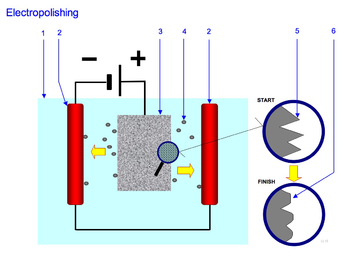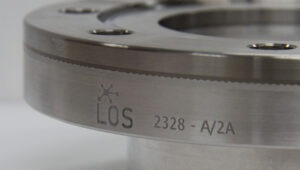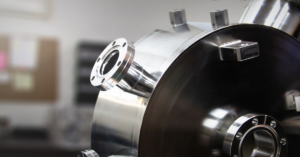Should You Electropolish Your Vacuum Component?

Electropolishing offers various advantages and drawbacks when it comes to components for vacuum systems. When deciding whether or not to electropolish your custom-fabricated vacuum component, it helps to know what EP can and cannot do for you in the context of your vacuum application.

What EP Can Do
Enhance Component Cleanliness
The concentrated acidic solution baths used in EP thoroughly clean a component by removing contaminants that can be introduced during fabrication (dust, debris, lubricants, fingerprints, etc.) Moreover, the surface of a stainless-steel component is rendered smoother after undergoing EP, meaning the resultant surface is easier to sterilize repeatedly over the life of the component.
Prolong Component Life
The EP process passivates stainless-steel components by removing iron from the surface and enhancing the concentration of chromium and nickel and that same surface. As a result, electropolished parts are less susceptible to corrosion over time.
Improve Aesthetic Quality
Electropolishing stainless steel concentrates chromium at the component’s surface and smooths out microscopic peaks and valleys in the material. When the EP process is performed after the component has been adequately polished by mechanical means beforehand, the result is a bright, smooth, mirror-like finish that is uniform across the entire component. Additionally, electropolishing can polish areas of a component that would otherwise be inaccessible by other polishing methods due to component geometry.
What EP Cannot Do
Achieve Exceptionally Smooth Surface Finishes On Its Own
The EP process serves to improve the surface finish that is already there, but it can only do so much. If you EP a rough, non-uniform, non-polished surface, the results will be neither aesthetically pleasing nor will they be particularly beneficial to the component’s vacuum performance. EP works best when done after the component has been given a uniform finish by some mechanical means (e.g. glass-bead blasted, machine-polished). The mechanical method employed will be determined by the surface finish specification and vacuum-performance benefits you hope to achieve post-EP.

Drastically Improve Pump-Down Time
The notion that rougher stainless-steel surfaces outgas more than comparably smoother surfaces has been refuted by several studies. When it comes to pump-down time, the main benefit to be achieved through electropolishing is the reduction of a component’s surface area at a microscopic level. This reduction in surface area allows water vapor to be more readily evacuated from the component’s surface. At high vacuum and ultra-high vacuum (UHV) pressure levels, water vapor becomes the primary gas load within a vacuum system. If a vacuum component is specified to be baked out prior to installation, then the pump-down benefits of electropolishing become even more negligible since the bake-out process will remove most of the water vapor.
What's Best For You?
Will your vacuum component need to be sterilized regularly? Will it operate in a corrosive environment? Are aesthetics of critical importance? Are you concerned that water vapor may prevent you from reaching your desired vacuum level?
If the answer to any of these questions is yes, then it is likely that the added cost and lead time of electropolishing will be worthwhile for you.
If the answers to these questions is no, then you may be able to save both time and money by opting for a glass-bead-blasted or machine-polished finish for your component instead.



